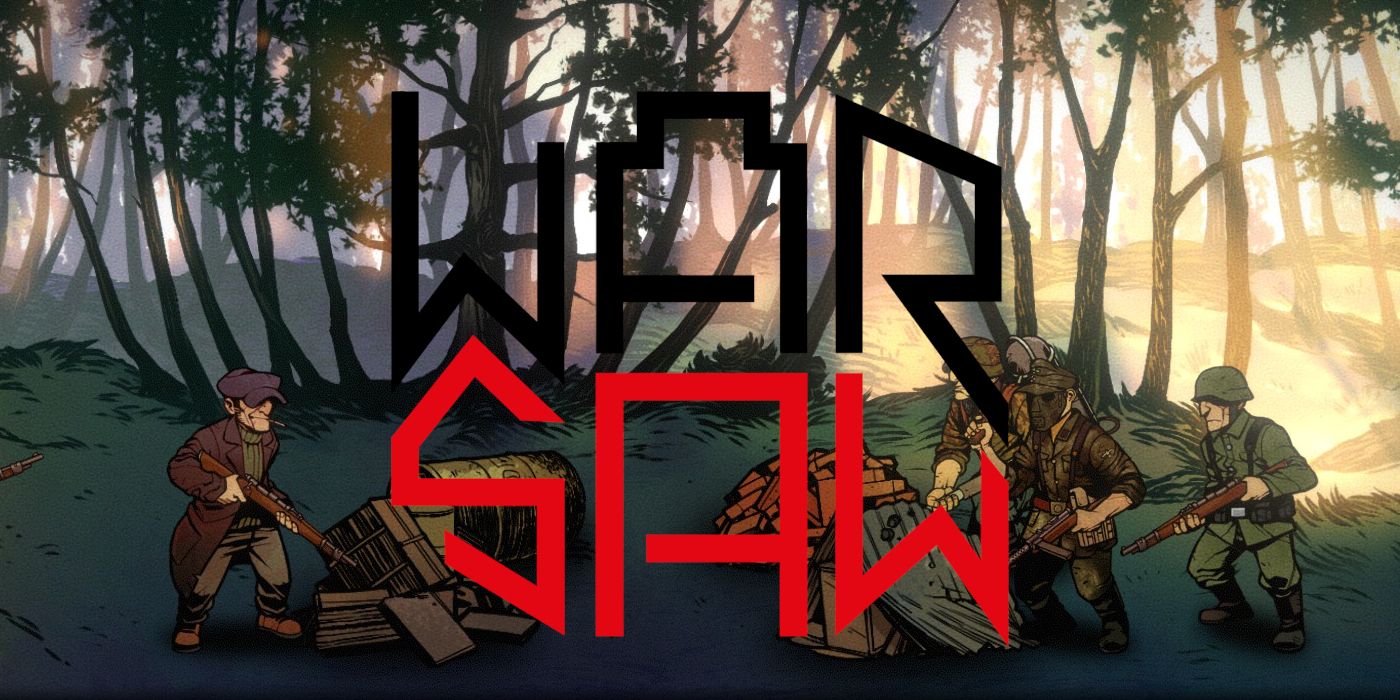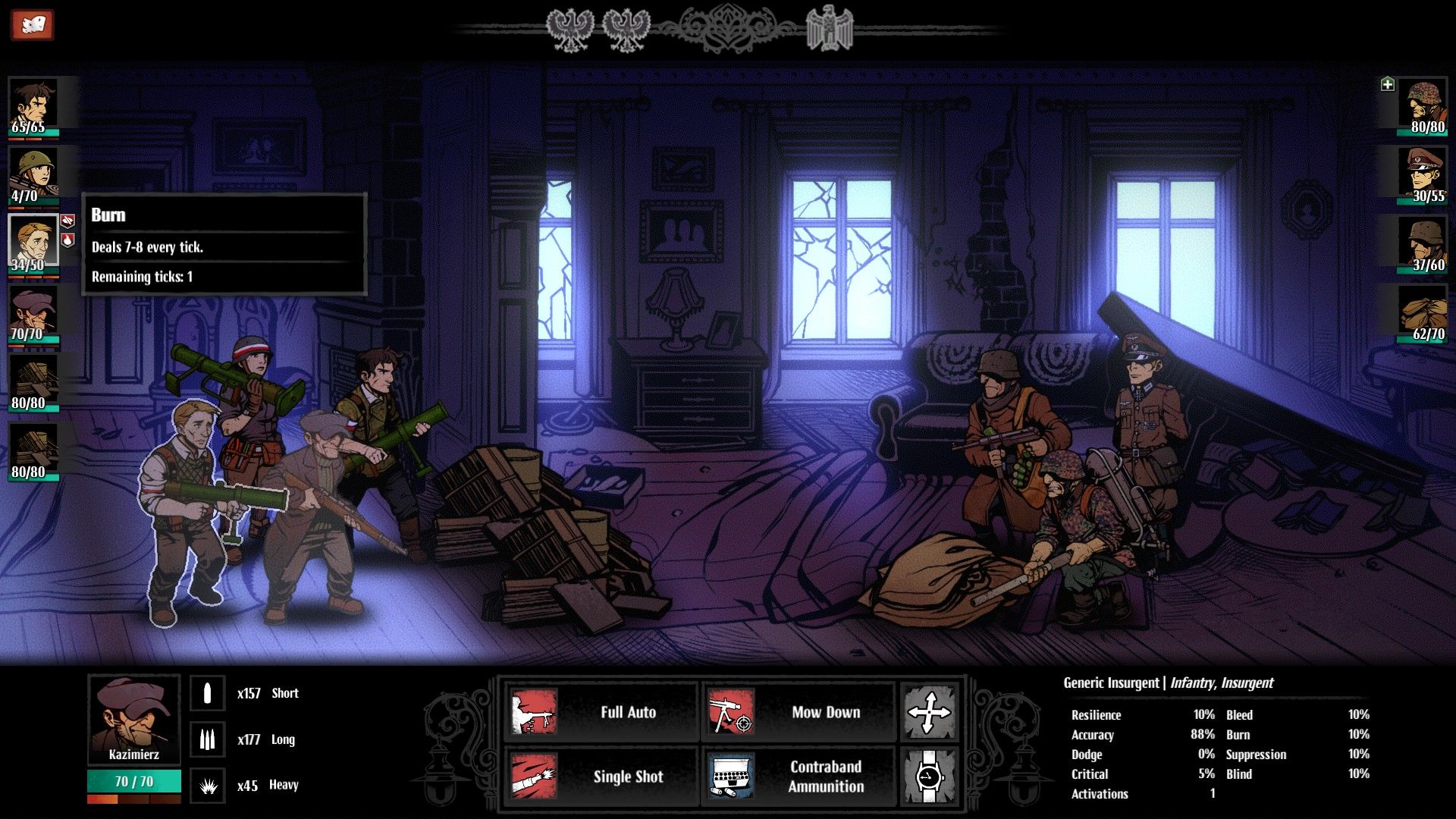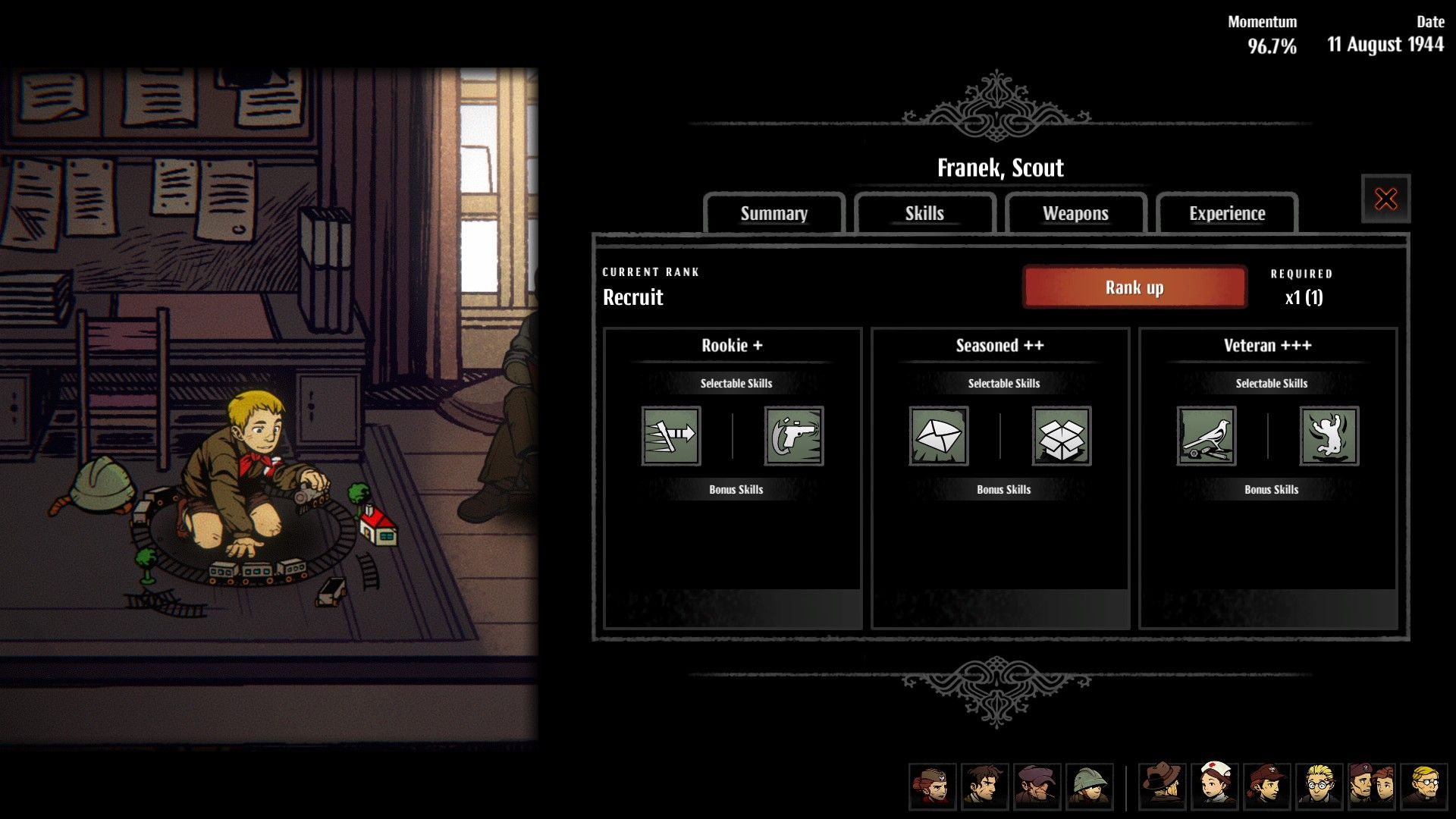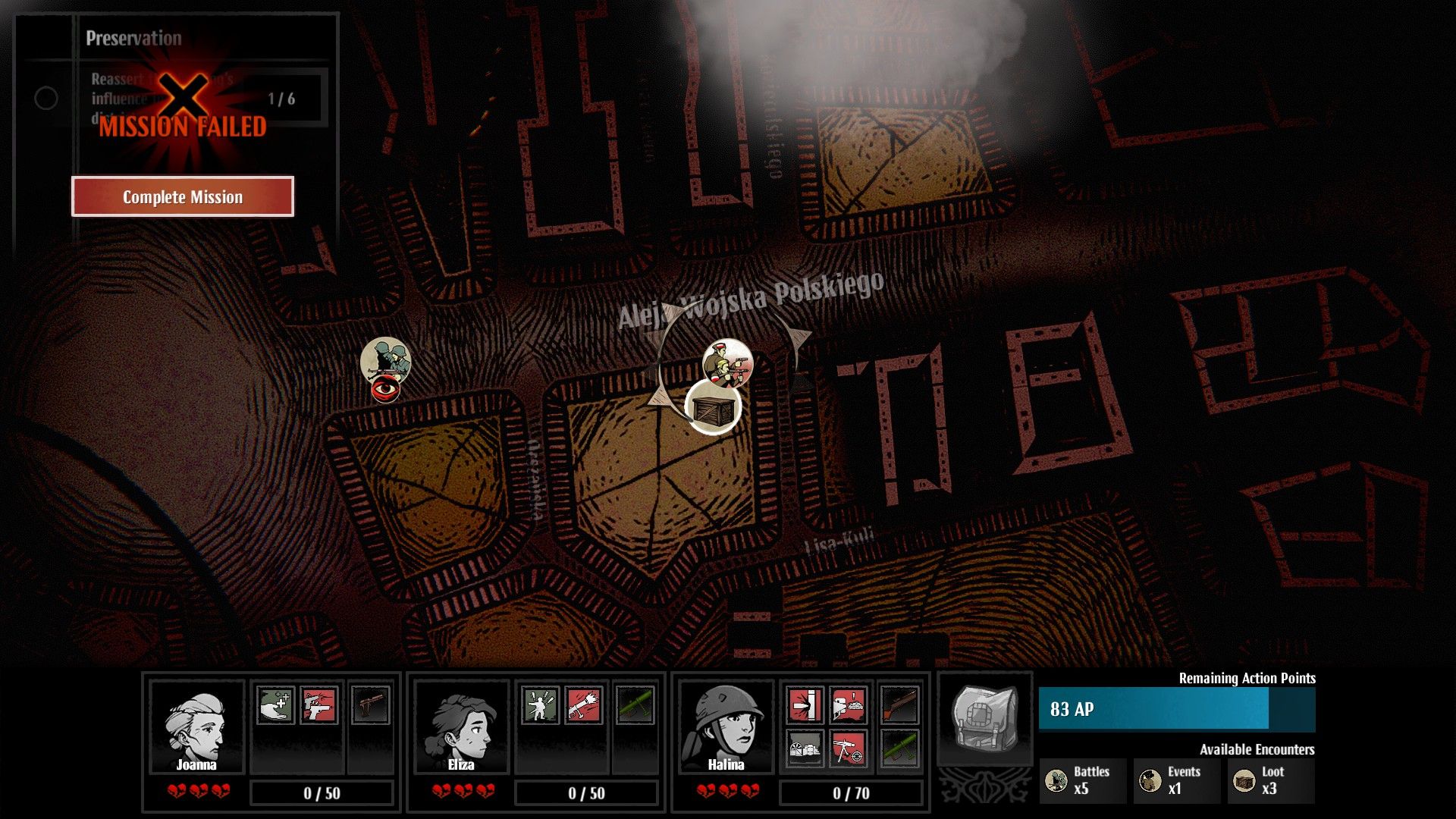There is a definite gamer niche who will heartily welcome Warsaw’s challenge and historical purpose, especially as the game is cleaned of bugs, over time.
History is more than a series of events, statistics, and important dates, and even sometimes more than the individual people underneath its treads. Sometimes, understanding a story requires being inside the story, a challenging gambit for a game developer wanting to represent a period of time accurately, directly, and with great emotional honesty. In this sense, the new tactical war roguelike Warsaw represents an admirable attempt to bring audiences into a lost-cause scenario, one whose resolution is ever far from triumphant, but still bears lessons in its design. Numerous flaws, critical crashes, and many mechanical frustrations — to say nothing of its merciless difficulty, even when the program is playing nice — eventually come at odds with these intentions, but there is a definite gamer niche who will heartily welcome Warsaw’s challenge and historical purpose, especially as the game is cleaned of bugs, over time.
You’d expect a cinematic or long text dump to introduce you to the game, but there’s nothing really of the sort. Warsaw immediately offers its menu screen with the chance to start a new game, trickles out some scant text ahead of the initial mission, then shuttles the player through a tutorial of combat basics and how each mission plays out. To be clear, the game’s many systems are woefully elaborate for a single tutorial, and most players will have to make do with tooltips and many, many mistakes before some of its finer points seem to gel.
There are three main phases in all in playing Warsaw. First there’s the hideout phase, where players observe their present roster of insurgents and spend a few precious resources on ammo, weapon repairs, or recruiting low-level soldiers. From there you select a mission on a map screen, most of which are never outright explained to you; “Take out a number of strategically important Pak Guns” makes sense, but “Reassert the uprising’s influence in the district” is completely opaque, and an example of a mission you’ll have to attempt in order to understand. Then there’s the mission itself, where players move a simple token around maps of Warsaw (apparently closely modeled after the districts as they looked at the time the game takes place), where you’ll encounter enemies, loot caches, and choose-your-own-adventure-type scenarios, all of which are randomized each playthrough.
The combat is definitely the meat and potatoes here, and it’s interesting enough as an update to Darkest Dungeon, the game from which Warsaw draws its most obvious inspiration. Combat is turn-based, amplified by dramatic animations for each action, and precise in what it wants from successful insurgents. Instead of a single plane to keep tabs on, each side has eight positions in two lanes where characters can move, and an elaborate stamina system plays into how many consecutive abilities different characters are allowed to use. There’s a considerable amount of obscure and slightly arbitrary details to these fights that players need to learn — for instance, even if four combatants are fighting only one final enemy, each turn lets one side immediately make a counter-move — but the systems are complicated and satisfying to figure out on the fly.
The combat isn’t the only place where Warsaw takes guidance from Darkest Dungeon. The art style itself is certainly inspired by the look of that oppressive roguelike, but less intimidating and rugged. Character design is clean and comic-book-flavored, and your favorite insurgents will always be recognizable at a glance. You’ll also probably memorize the look of the most intimidating nazi units, prioritizing them well before you even highlight their icons to check stats. It’s a bold and attractive art style that, while never quite as gorgeously immersive as Darkest Dungeon or Deep Sky Derelicts, serves the theme, history, and sensibility of the game very well.
Unfortunately, these well-drawn characters are rarely given much more context. A codex in the game reveals more details about each of them, but its tucked away in a menu behind a character at you hideout that can effectively be ignored. Warsaw’s story is certainly much larger than a single person, but even the actual narrative itself is fairly subdued. It seems like a game that wants to impart the feeling of fighting a losing grassroots battle against a terrorizing threat, thereby instilling that sensation through the tense gameplay more so than any careful theatrical sequence or demonstration. In that sense, it’s certainly successful, because the experience is brutal.
Ammo and supplies are scarce, so players should prepare to have an entire playthrough upended by a complete loss of ammunition (even within a single skirmish). This isn’t entirely shocking when considering Warsaw’s roguelike tag, but having to shutter any hope of a successful run simply because of supply management is absolutely unsatisfying. In fact, even going so far as to lose all insurgents never prompts a game over screen, forcing you to click a button and end a mission on your own, then restarting with no fanfare at all.
The best way to describe Warsaw might be “not quite finished,” because the experience as a whole seems critically incomplete. This feels like an Early Access product seeking a full release date, where even the sleepy soundtrack comes off as placeholder. A complete crash back to desktop occurred in the middle of several attempts to play through the game. That sounds surmountable, except on the occasion where you reload a previous save and discover that, for some reason, all your ammo has disappeared, rendering the run null and void. Other times, a crash in the middle of a mission returns players back to the start of the battle, only with different enemies, a dynamic which taught us that you can restart those encounters until you’re facing an easier assortment of nazi troops. Text boxes absent of text during the CYOA scenarios and other minor bugs popped up here and there, but a roguelike whose crashes risk wrecking an otherwise well-planned run is a serious problem.
It might be wise to watch Warsaw’s post-launch progress, because a better tutorial, some tweaks here and there (weapon accuracy is a serious problem, with countless 85%-and-up shots missing their target), and general stability updates could make this the exact type of game a very particular player will appreciate. Beyond that, its subtle history lesson concept is fascinating and thorough, and may even move some to read up on the Warsaw Uprising of 1944. For now, though, it’s going to need a bit more work to live up to its inspirations.
Warsaw is available on PC/Steam, with console ports forthcoming on PlayStation 4 and Nintendo Switch. A digital Steam copy was provided to Screen Rant for purposes of review.




